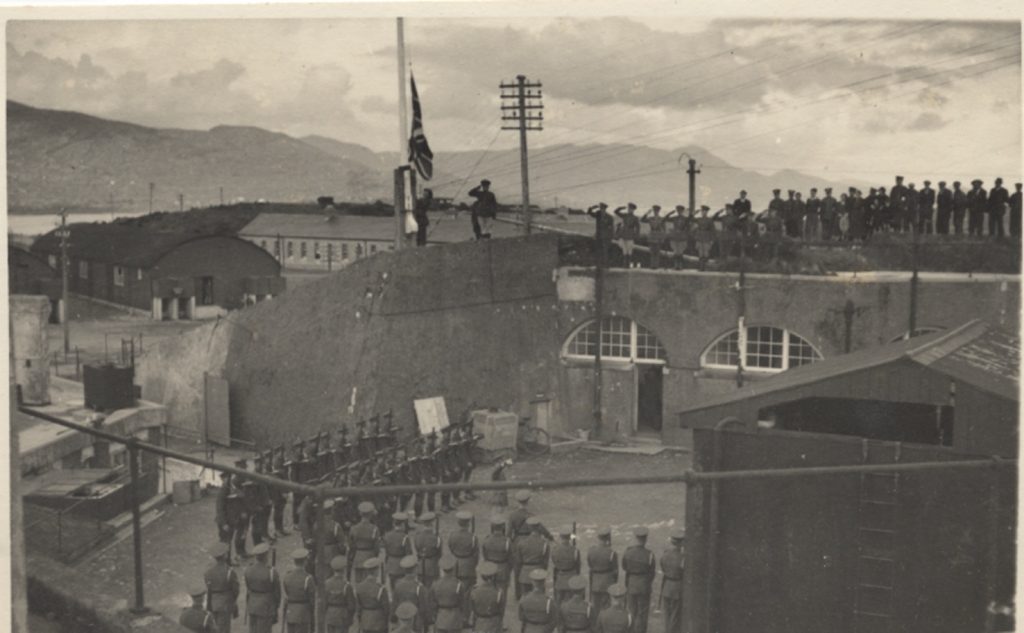Thursday 17th February 2022
On the night of February 17th 1875, the Joseph Howe, a large three masted brigantine, was wrecked on precipitous cliffs on the south side of Bere Island. The ship was bound for Cork carrying a cargo of mahogany from Mexico.
On that February evening in 1875, as the sun set on the horizon, storm clouds began to gather in the south west. The storm came quickly, bringing ferocious gales, and mountainous seas with it. Into this storm sailed the Joseph Howe. She was tossed in the high seas and by the time she entered the mouth of Bantry Bay she was rudderless and her sails were in tatters. Her crew were suffering from scurvy and were too weak and exhausted to handle the vessel in such seas. The Captain had hoped to find shelter in Berehaven harbour. However, as she approached Bere Island, the winds drove her onto sheer cliffs on the southern side of the island known as Faill na dTadgh.
During a storm, as the sea drives the waves into this inlet the receding waves meet the oncoming fury of sea, creating a whirlpool effect. It was into this the Joseph Howe was thrust. Her cargo of mahogany was thrown against the sides of the cliffs like matchsticks. Against the odds, four of her crew managed to survive. When they realised they had no hope of surviving by staying on their stricken vessel, they threw themselves overboard. By sheer luck, a huge wave catapulted them onto a ledge on the cliffs. Among the four that survived were the Captain William Templeton, and Peter Seymour the steward. The men somehow managed to cling onto this ledge until daybreak when their cries were heard by a local man, Dennis Harrington.
Dennis was 21 years old at the time of the not far from the cliffs. With the help of a neighbour he got a rope and managed to haul the four men to safety. The rescued men were brought into Castletownbere However, not long after their ordeal, the steward Peter Seymour reported to the coastguards that during the voyage the captain had ill-treated the galley boy, attacking him and knocking the young boy unconscious. The galley boy eventually died from his injuries and was buried at sea. On hearing this, the coastguard notified the Royal Irish Constabulary, and the captain was arrested. He was, tried and found guilty of manslaughter. He was sentenced to eighteen months hard labour.
Local men salvaged much of the Joseph Howe’s cargo and were compensated by Lloyds Agents. It was reported that at one time the salvaged timber stretched from across Berehaven Harbour and local schoolboys played dares by stepping from timber to timer across the harbour. Dennis Harrington received the sum of 15 pounds for his bravery and later composed a poem detailing the wreck of the Joseph Howe.
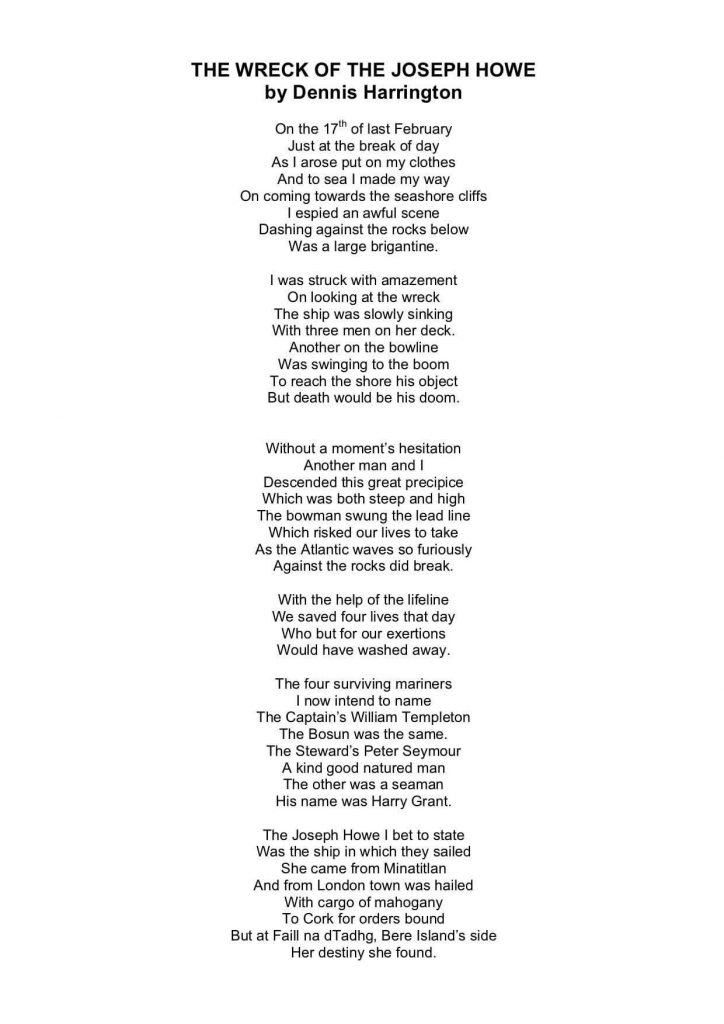
Wednesday 2nd February 2022
On this day in 1805, the construction of four Martello towers on Bere Island was completed. The towers were built following the attempted French invasion of Bantry Bay in 1796 as a deterrent to prevent against any further invasions. On their completion, the towers were inspected by Sir Arthur Wellesley who would later become the Duke of Wellington. Two Martello towers still remain at Cloughland Hill and Ardagh Hill. The other towers were located at the site of Lonehort Battery and Rerrin Redoubt and were demolished during the construction of these fortifications.
Coincidentally today also marks the centenary of the publication of Ulysses by James Joyce, the book’s opening scene was set in a Martello tower in Sandycove, Dublin.
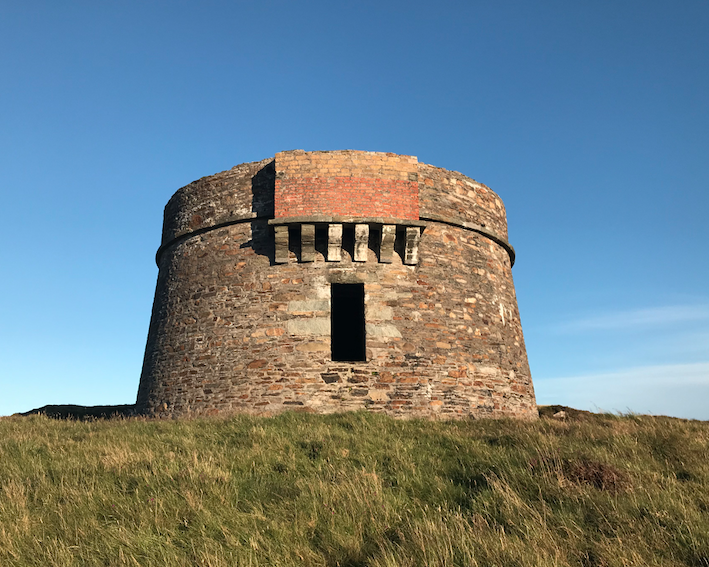
Friday 7th January 2022
One hundred years ago today, the Anglo Irish Treaty was ratified in Dail Eireann. A condtion of the Treaty saw Britain retain three deepwater ports at Cobh, Lough Swilly and Bere Island.
Bere Island would remain in British control until September 1938 when it was handed back to the Irish Government.
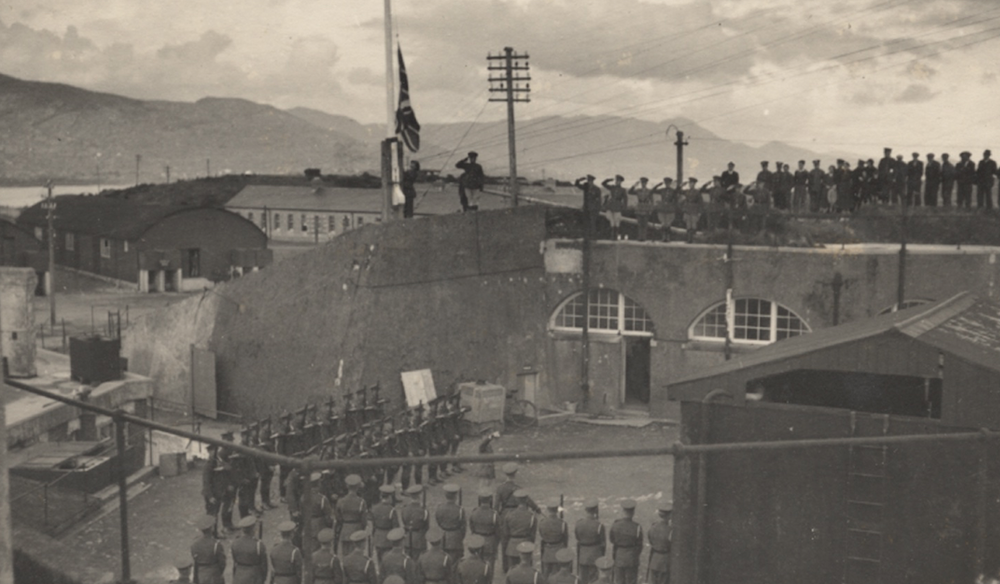
Wednesday 15th December 2021
On this day in 1982, the Panamanian registered factory fishing vessel, the MV Bardini Reefer sank off Bere Island. Part of the wreck is still visible on the surface. It sank following an onboard fire and explosions. All the crew were rescued by local boats.
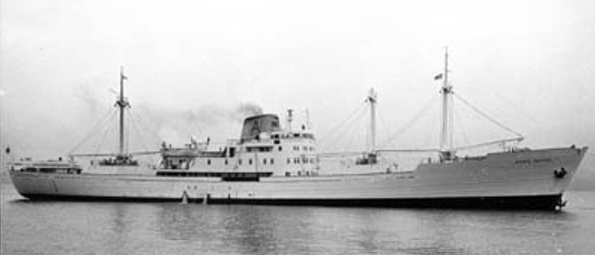
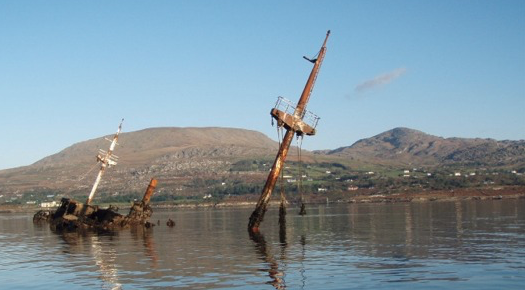
Friday 10th December
On this day in 1921 the internment camp on Bere Island closed following the signing of the Anglo-Irish Treaty four days earlier on 6th December. The photo below is a group of the internees as they were preparing to leave.

Click here to view a film on the history of the Bere Island Internment Camp which was produced by Bere Island Projects Group with funding from The Heritage Council’s Community Heritage Grant Scheme.
Tuesday 7th December
Today is the 80th anniversary of the attacks on Pearl Harbour, Hawaii. Three of the battleships which were sunk inlcuded the USS Nevada, USS Oklahoma and USS Utah, all of which had anchored in Berehaven in 1917/1918 while protecting the Atlantic convoys. Pictured here is the USS Utah at anchor off Bere Island in 1918.
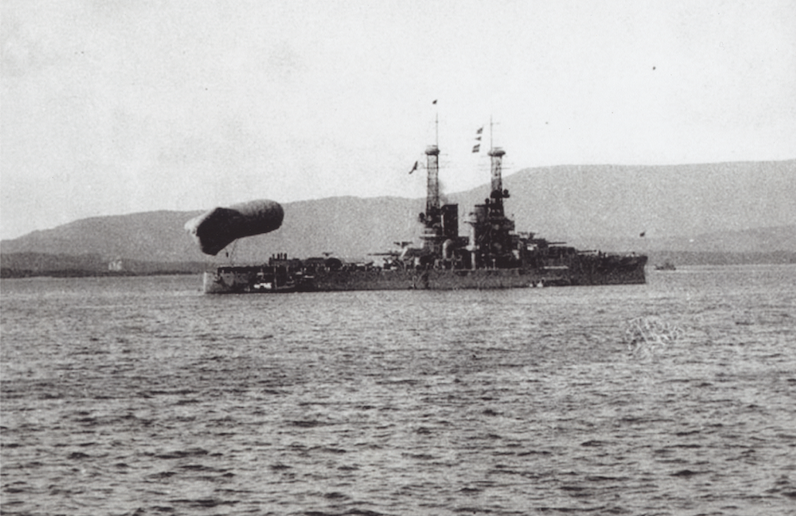
Monday 6th Decembe
Today marks the centenary of the signing of the Anglo-Irish Treaty. A condition of the Treaty saw England retain three deepwater ports at Cobh, Lough Swilly and Berehaven which became known as the Treaty Ports. The Handover of Fort Berehaven, Bere Island eventually took place on 26th September 1938. The Union Jack was lowered at 12 noon and the Tricolour raised over the Fort at 12.01pm. When the final detachment of British forces left Bere Island on 30th September, it marked the end of a continual British military presence on on the island since 1797.
